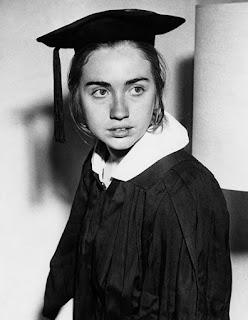Hillary Expands Following on Younger Voters
Hillary Clinton has expanded her lead over Republican rival Donald Trump to 28 percentage points among voters younger than 30, according to a new survey by the Harvard Institute of Politics that signals trouble ahead for Republicans with this crucial voting bloc.
The national survey, released Wednesday, found that Mrs. Clinton is backed by 49% of likely voters aged 18 to 29, compared with 21% for Mr. Trump, 14% for Libertarian Gary Johnson and 5% for Green Party candidate Jill Stein.
The poll suggests Mr. Trump could set back GOP efforts to improve its standing with millennials, a voting bloc that is about to surpass baby boomers as the largest generation of eligible voters. In Harvard’s October 2012 survey, GOP nominee Mitt Romney trailed President Barack Obama, who was a magnet for young voters, by just 19 points among those under 30, 55% to 36%.
Related Video
0:00 / 0:00
Hillary Clinton is eyeing traditionally Republican states as potential battlegrounds this campaign season. WSJ's Gerald F. Seib sizes up Democrats' chances in Arizona, Georgia, Texas and Missouri. Photo: AP
John Della Volpe, polling director of the Harvard Institute of Politics, said Mrs. Clinton’s growing lead—up from 22 points in a July Harvard poll—was noteworthy because Mrs. Clinton has struggled to bring along millennials. During the Democratic primary campaign, Sen. Bernie Sanders was the prohibitive favorite among the group.
“She has had a very complicated relationship with this generation for eight years,” said Mr. Della Volpe, who believes Mrs. Clinton is reaping benefits from a concerted campaign effort to court them since the summer’s Democratic convention. “She understood the importance of this vote. If not for millennials, this would be a much closer race.”
Both candidates are viewed more negatively than positively, but Mrs. Clinton’s image has improved since July, while Mr. Trump’s stayed about the same. Among likely young voters, Mrs. Clinton is viewed favorably by 48% and unfavorably by 51%. For Mr. Trump, 22% are favorable and 76% unfavorable.
The poll found Mrs. Clinton’s dominance among young voters extended to all subgroups—besides Republicans—even among young white voters who in 2012 had favored Mr. Romney by 4 points. She also led Mr. Trump among young women and voters without a college degree by wider margins than Mr. Obama led Mr. Romney in 2012. However, her lead with young Hispanics is narrower than Mr. Obama’s, and among blacks, her lead is the same as his.
While Mrs. Clinton has benefited from the strong negative feelings most young voters had about Mr. Trump, her greater risk may come from millennials who are tempted to vote for a third-party candidate or not vote at all.
“The choice was between Clinton, Johnson and the couch,” Mr. Della Volpe said. Mr. Della Volpe found in a separate analysis of Google tracking polls in September that, when Mr. Johnson stumbled on an interview question about the war-torn Syrian city of Aleppo, it took a bigger toll on support among young people than other age groups.
While young voters have shown more support for third-party candidates than other generations, the Harvard poll found their interest in such candidates may not be durable: More than one-third of Mr. Johnson’s supporters said they would likely vote for another candidate on Election Day. Only 6% of Clinton supporters and 5% of Trump supporters said the same.
2016 Electoral College Map?? Different options to a win from red states to blue(wall st journal)

Republicans and Democrats seem about equally committed to voting this year, but GOP voters’ commitment has dropped significantly from 2012. Asked if they would definitely vote on Election Day or before, 59% of Democrats and 56% of Republicans said yes. In 2012, 60% of Democrats and 65% of Republicans said they definitely would vote.
Young Hispanics and independent voters are more likely to vote this year than 2012: 39% of Hispanics say they would definitely vote, up from 31% in 2012. For independents, the share of definite voters rose to 36% from 29% in 2012.
The poll found the mood of this generation grim and anxious. Asked how they felt about the future of the country, 51% said they were fearful, while just 20% said they were hopeful. More than three-quarters said they were concerned about the state of race relations in the U.S.
The KnowledgePanel survey of 2,150 18- to 29-year-olds was conducted with the Government and Academic Research team of Gfk for the Institute of Politics Oct. 7-17. The margin of error is plus or minus 3.11 percentage points.
By Janet Hook, can be reached at janet.hook@wsj.com


